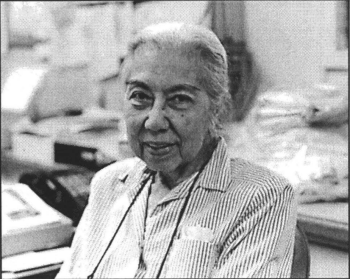Minerva Saiki Hayakawa

Tsunamis Remembered: Oral Histories of Survivors and Observers in Hawai‘i
Life history interviews with individuals who witnessed and survived tsunamis-particularly the 1946 and 1960 disasters on the Big Island of Hawai'i. Thirty individuals-mostly residents of Hilo and Laupahoehoe-recall their experiences before; during, and after the 1946 and 1960 tsunamis which were arguably the most destructive natural disasters in modem Hawaiian history.
Born August 21, 1913, Minerva Kiyoko Saiki Hayakawa was the flfth of eight children. While still a young child, her father, Takaichi Rupert Saiki immigrated with his family to Hilo from Hiroshima, Japan. He attended schools in Hilo, worked at the First Bank of Hilo, and eventually, in 1913, started Hilo Rice Mill, a grocery importing and wholesaling flrm. Hayakawa's mother, Mary Forbes Saiki, was the daughter of Thomas Forbes, Jr., a former sugar plantation engineer, and Emele Kamaka'o'umi, a native Hawaiian from the Big Island. The family lived on Piopio Street when Hayakawa was born; they later moved to a home on Waianuenue Avenue. Hayakawa attended Hilo Union School, Hilo Intermediate School, and graduated from Hilo High School in 1931. She attended and graduated from the University of Hawai'i at Manoa in 1934. She returned to Hilo in 1936 and began working as a clerk at the family's Hilo Rice Mill, which was located on Kamebameha Avenue. In 1937, she married Hiroshi Hayakawa. The couple lived in Papa'ikou. At the outbreak of World War II, Takaichi Saiki was interned on the U.S. Mainland. In his absence, Minerva Hayakawa assumed management of the company, eventually becoming president. The oral history interviews were conducted at the Hilo Rice Mill, today located on Po'okela Street in the Hilo industrial area. The business was relocated there after the 1960 tsunami destroyed the building. The 1946 waves caused some water damage to merchandise, but miraculously the building survived. Her brothers and daughter, Naomi Hayakawa, are also active in the business.
Scope and Content Note
A woman of Hawaiian, Japanese, and Scotch ancestry describes family life growing up in Hilo. She remembers her father, a bank employee who was interned in World War II, and her mother, a teacher who taught her at Hilo Union School. Hayakawa worked at Hilo Rice Mill, the family's wholesaling business, which survived the April 1, 1946 tsunami but was washed away in the 1960 tsunami. Also contributing to the interview was her daughter, Naomi Hayakawa.
Program Note:
This interview is part of the Center for Oral History's project Tsunamis Remembered: Oral Histories of Survivors and Observers in Hawai‘i. Interviews from this project are available in the Center's ScholarSpace open access repository.
The Center for Oral History (COH), in the Department of Ethnic Studies at the University of Hawaiʻi at Mānoa, collects, documents, preserves and highlights the recollections of Native Hawaiians and the multi-ethnic people of Hawaiʻi. It produces oral histories and interpretive historical materials about lifeways, key historic events, social movements and Hawaiʻi’s role in the globalizing world, for the widest possible use.
Please Note: The oral histories in this collection are protected by copyright and have been created for educational, research and personal use as described by the Fair Use Doctrine in the U.S. Copyright law. Please reach out Voices@noaa.gov to let us know how these interviews are being used in your research, project, exhibit, etc. The Voices staff can help provide other useful resources related to your inquiry.
The NOAA mission is to understand and predict changes in climate, weather, oceans, and coasts, to share that knowledge and information with others, and to conserve and manage coastal and marine ecosystems and resources. The Voices Oral History Archives offers public access to a wide range of accounts, including historical materials that are products of their particular times, and may contain offensive language or negative stereotypes.
Voices Oral History Archives does not verify the accuracy of materials submitted to us. The opinions expressed in the interviews are those of the interviewee only. The interviews here have been made available to the public only after the interviewer has confirmed that they have obtained consent.
